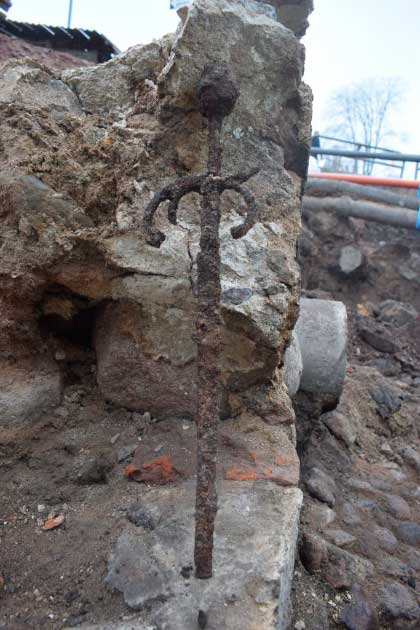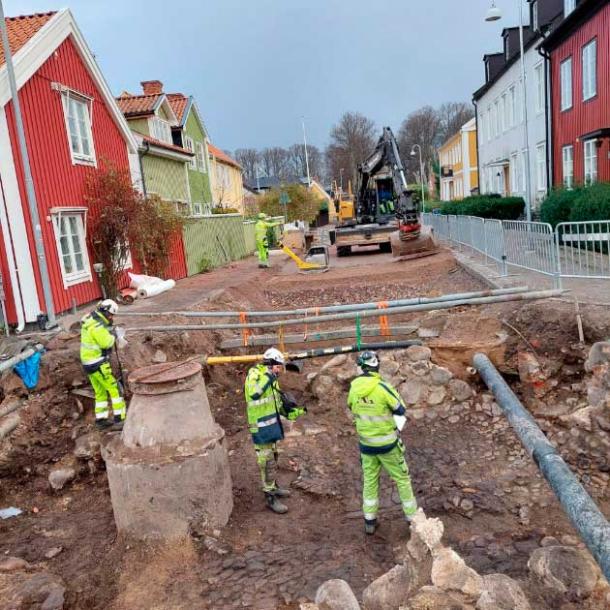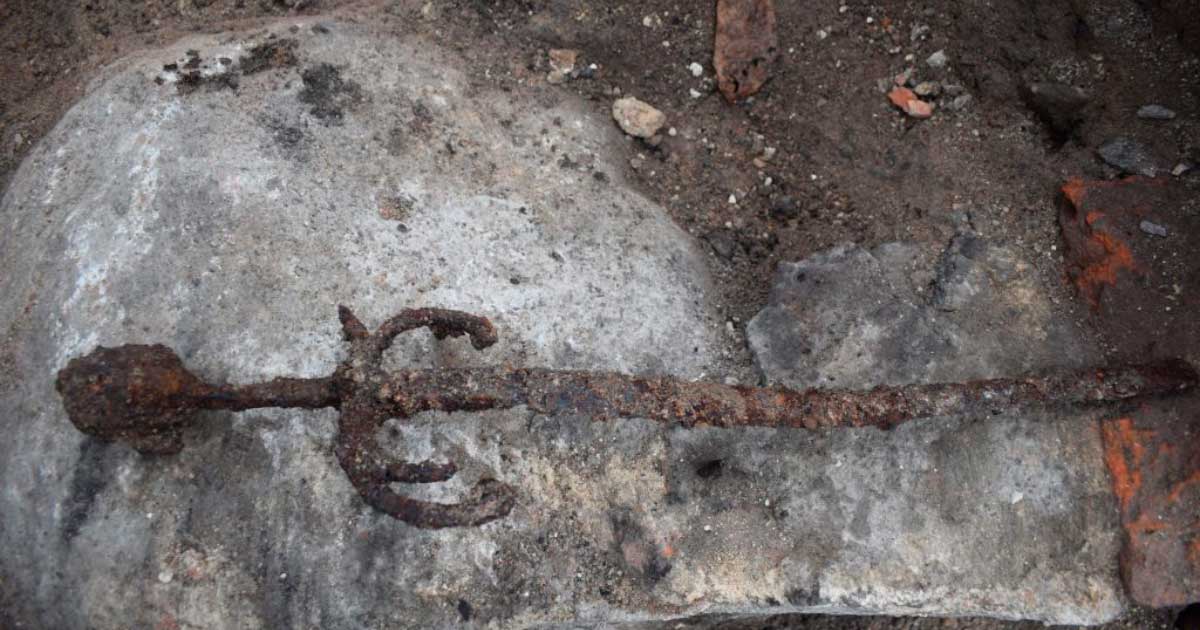In an extraordinary find, archaeologists in Sweden have uncovered a rare battle sword from the 17th century, highlighting a significant advancement in military technology. This remarkable discovery occurred during an excavation of a 400-year-old cellar floor in Kalmar, a city celebrated for its historical architecture and strategic relevance during the Kalmar War. The artifact not only sheds light on the weaponry of that era but also represents a crucial turning point in military history.
Discovery and Excavation
The team from Arkeologerna, a leading Swedish archaeological firm, was digging at the intersection of Kungsgatan and Västerlnggatan in Kalmar, situated along Sweden’s southeastern coast by the Baltic Sea. This area is well-known for its Renaissance-style Kalmar Castle and its well-preserved 17th- and 18th-century structures. Historically, it was the site of a medieval farm owned by Gotskalk Hulskede in 1368 AD, mentioned again in a document from 1483 AD, and ultimately destroyed by fire during the Kalmar War in the summer of 1611 AD.

During their excavation of the cellar floor, the archaeologists discovered various artifacts, including two severely scorched hand grinders, charred grains, and fragments of brick, stone, and wood. These remnants likely originated from the upper levels of the buildings that once stood above the cellar. The most significant find, however, was a rare Danish sword buried beneath collapsed roofing materials.
The Kalmar War: Context and Conflict
The Kalmar War (1611-1613 AD) was an important conflict between Sweden and Denmark-Norway. Tensions escalated in 1607 AD when King Charles IX of Sweden asserted control over traditionally Norwegian Lapp territories and imposed taxes. Sweden’s efforts to circumvent tolls imposed by Denmark and Norway by establishing a new trade route through Lapland further intensified the conflict.

In retaliation, King Christian IV of Denmark-Norway declared war in April 1611 AD and initiated an invasion with an army of 6,000 Danish soldiers. The city of Kalmar and its castle were vital targets due to their strategic position over the Kalmar Strait and access to northern trade routes. Although the Danish forces achieved some early successes, they struggled to decisively overpower the Swedish defenders. Following months of siege and significant casualties—approximately 700 Swedish and 200 Danish soldiers—peace negotiations culminated in the Treaty of Knäred on January 21, 1613, effectively bringing the war to an end.
Evolutionary Leap in Military Technology

The rare Danish sword discovered in the cellar is regarded as a pivotal artifact from the era of the “Military Revolution,” a term introduced by historian Michael Roberts in 1955 to describe transformative changes in warfare between 1560 and 1660 AD. This period witnessed substantial advancements in military tactics and weaponry, paving the way for Western Europe’s emergence as a dominant global power.
According to Arkeologerna, the sword represents “an evolutionary leap” from earlier medieval designs to the more sophisticated weaponry that characterized the battlefields of the 17th century. This transition underscores broader shifts in military technology and tactics during that time.
Conclusion

The discovery of the Danish sword in Kalmar not only establishes a tangible connection to Sweden’s military heritage but also signifies the wider transformations in warfare during the early 17th century. As an artifact of the Military Revolution, this sword exemplifies the advancements in military technology and tactics that arose from this conflict. This find provides invaluable insights into the evolution of weaponry and highlights the historical significance of the Kalmar War, marking a pivotal chapter in Sweden’s military history and its influence on modern warfare.

